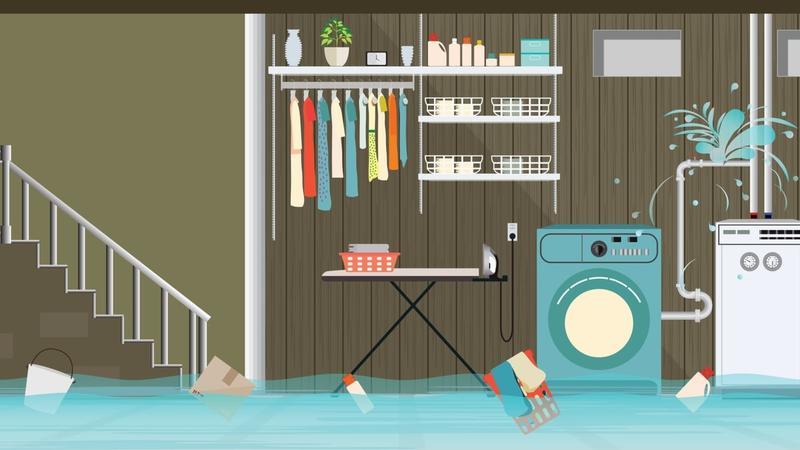Flooding in your basement can do a lot of damage, whether or not you have a finished area. Floodwater can cause mold to grow in the walls of your house, damage your electrical system, and of course damage any personal property in the basement area. When it comes to getting insurance quotes and coverage for flooding, what is covered and what isn’t can be complex. Prevention is the best way to avoid a claim and the serious damage of a flood.
Prevention Starts Outside
Keeping water out of your basement begins with keeping water away from it. The land around the home has a big effect on how likely a flood is in your home. It’s important to ensure that you have proper drainage allowing water to flow away from the home safely.
It’s also important to install retaining walls as needed and to ensure all down spouts and gutters are clear of debris and able to keep water from rainfall flowing through them and away from the base of the home. If at all possible, the home should be elevated with water having a clear path to flow away and not towards the home. Watch for signs of erosion that might result in a water risk.
If needed, you should use sandbags around the home to prevent rising waters from reaching the home and getting into the basement. This is usually only required during serious flood risk conditions, but it’s not a bad idea to have the equipment on hand if you live in an area prone to flooding.
Simple Steps to Flood Prevention
There are a few things you can install on your home if they are not already in place to prevent basement flooding as a result of water backing up. Install valves that prevent water from backing up through your pipes. A sump pump is a highly effective means of keeping unwanted water from getting into the basement, pumping it out as needed before it can become a problem. Make sure that it is in good working order and properly maintained, and replace it when there are signs it is no longer working effectively.
If your basement has windows they are a major point of water entry. Be sure to seal them thoroughly, and consider adding an extra layer of protection outside the windows during the wet months to prevent water from getting in. Heavy duty plastic sheeting well sealed on the edges is a simple and affordable measure.
You should also seal any other cracks around the basement where water might seep in. A sealant applied to all of the outside walls is a good overall protection measure to prevent water from getting into the basement. Check any pipes in the basement including those around a water heater or washing machine regularly to make sure nothing is leaking. Maintenance is vital to flood prevention.
Water From Above
Anything that is leaking on the floor above the basement will send that water down as a matter of course. Gravity is not your basement’s friend when it comes to leaks! Watch for any signs of a problem in the pipes. A running toilet may have a leak under the floor that could reach the basement. Fix any leaky pipes as soon as possible. A small leak may lead to a pip bursting, resulting in major basement flooding, so don’t ignore any leak, even if it appears to be minor.
Appliances on the main floor that use water such as a dishwasher or a refrigerator with a water line may cause basement flooding as well if they are poorly installed or the lines degrade. Keep up on maintenance and make sure everything is properly installed and in good working order.
Basement flooding is a common problem that can often be prevented with a little time and effort. The basement is the room on your home that is most likely to see water seepage or flooding, and much of your flood prevention effort should be focused on that area. Because many causes of flooding are not covered by your home insurance, the cost of such water damage will be the homeowner’s responsibility. Avoid the risk of water damage that isn’t covered and the destruction of your personal property by preventing flooding in your basement before it can happen.
